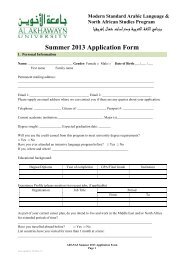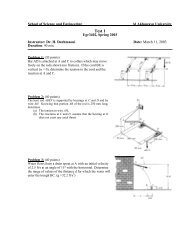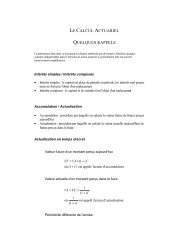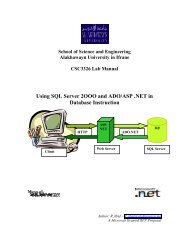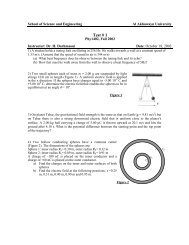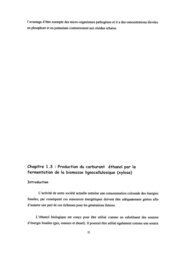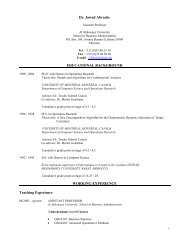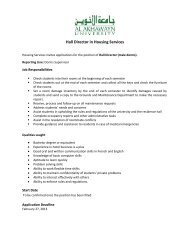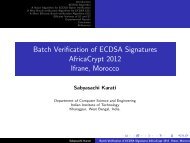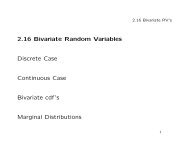Leadership and Values in Language Education - Al Akhawayn ...
Leadership and Values in Language Education - Al Akhawayn ...
Leadership and Values in Language Education - Al Akhawayn ...
- No tags were found...
Create successful ePaper yourself
Turn your PDF publications into a flip-book with our unique Google optimized e-Paper software.
119Proceed<strong>in</strong>gs of the 27 th MATE Annual Conference“to identify the prerequisite knowledge <strong>and</strong> competencies that theirstudents will need <strong>in</strong> order to participate <strong>in</strong> specific classroom events,<strong>and</strong> be cognizant of the contextual issues surround<strong>in</strong>g classrooms,[which] enable teachers to adjust the patterns of communication so asto maximize students’ l<strong>in</strong>guistic <strong>and</strong> <strong>in</strong>teractional competencies <strong>and</strong>create opportunities for students to beg<strong>in</strong> to acquire a repertoire ofcompetencies that they can successfully participate <strong>in</strong> a wide range ofclassroom events” (1995: 163).This clearly would suggest the need for explicit statement of the pedagogicalpurposes of the language classroom <strong>and</strong> of each lesson or lecture at the levels ofobjectives, content <strong>and</strong> methodology of classroom communication <strong>and</strong>evaluation. In other words, the course descriptions <strong>and</strong> objectives should be madeclear <strong>and</strong> be explicitly <strong>and</strong> concretely expla<strong>in</strong>ed to students at the beg<strong>in</strong>n<strong>in</strong>g ofthe academic year. I n addition to this, patterns of classroom participation <strong>and</strong>organization need to be expla<strong>in</strong>ed, that is, the necessary participative l<strong>in</strong>guistic<strong>and</strong> <strong>in</strong>teractional competencies need to be presented <strong>and</strong> expla<strong>in</strong>ed to students <strong>in</strong>order to facilitate their creative <strong>and</strong> productive engagement <strong>in</strong> classroom<strong>in</strong>teractive communication; otherwise, they could become confused about what isexpected of them, or how they are expected to participate. In this regard, Johnson(1995) suggests that for teachers to establish their students’ classroomcommunicative competence they would need to:• Make the norms that govern classroom communication both explicit <strong>and</strong>predictable,• Create opportunities for students to practice <strong>in</strong>structional tasks us<strong>in</strong>gmore exploratory language before be<strong>in</strong>g expected to perform <strong>in</strong> front ofthe entire class,• Use the class meet<strong>in</strong>g to teach small group <strong>in</strong>teraction skills.(op.cit:163)2. 5. The classroom environmentShared leadership practice <strong>in</strong> language teach<strong>in</strong>g classrooms depends on the abilityto create a relaxed <strong>and</strong> safe atmosphere <strong>in</strong> the classroom to make it as open aspace as possible where students could feel self-confident <strong>and</strong> self-dependent <strong>and</strong>where they could share responsibility <strong>and</strong> assume some responsibility forconduct<strong>in</strong>g classroom <strong>in</strong>teraction <strong>and</strong> class management. This would be of greatimportance with groups of students whose general conceptions of their roles <strong>and</strong>that of their teachers are rather traditional <strong>and</strong> conservative, groups of studentswho generally expect the teachers to assume a total responsibility <strong>and</strong> leadership




